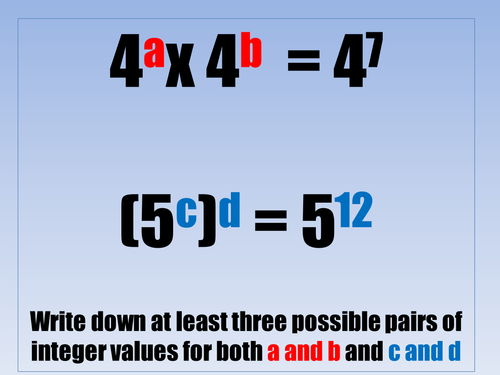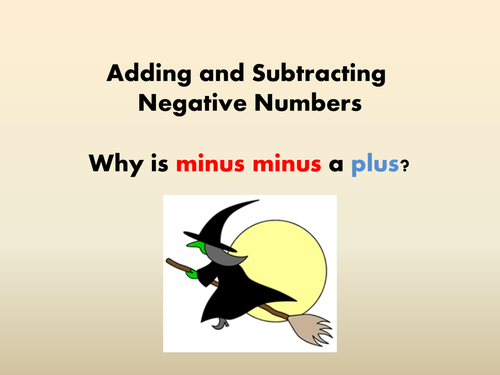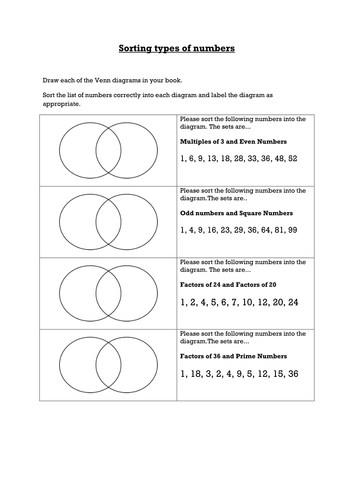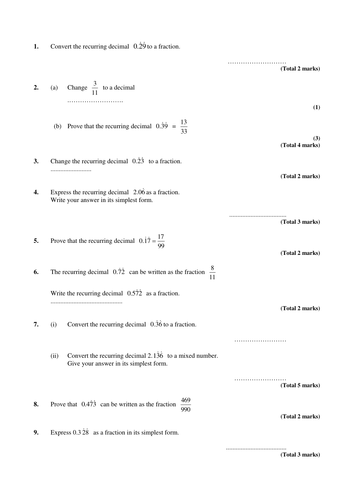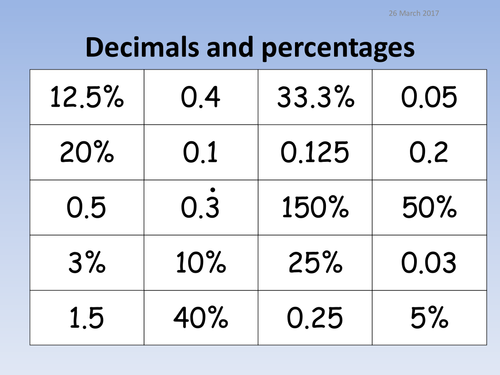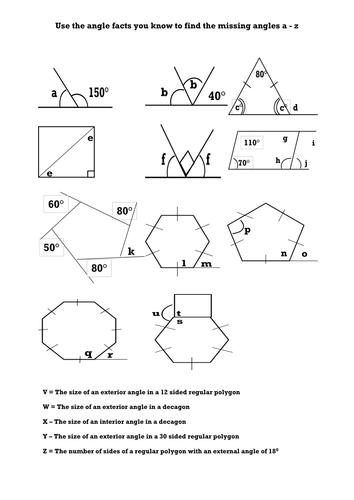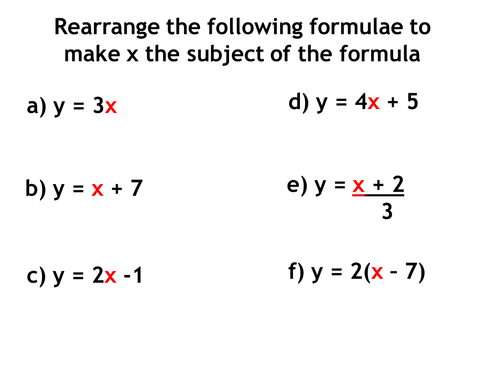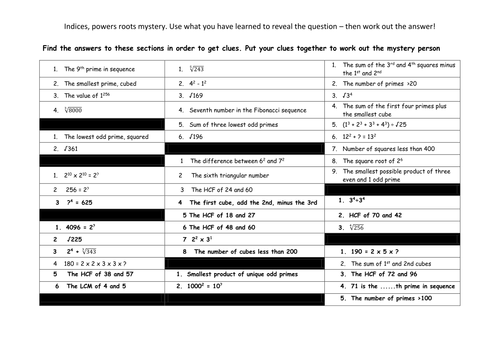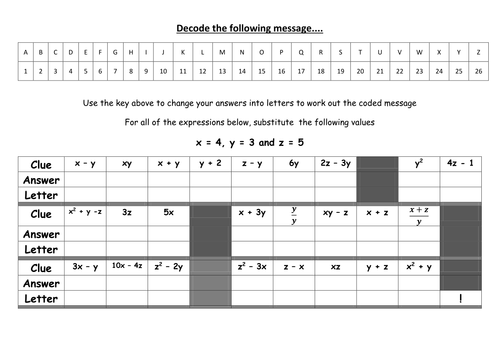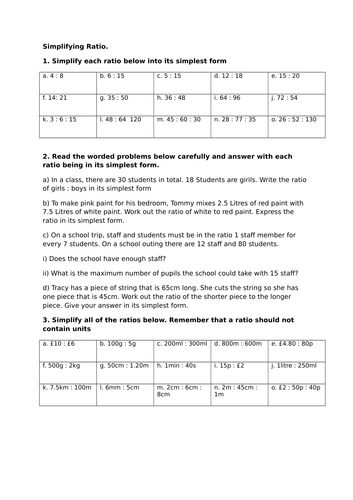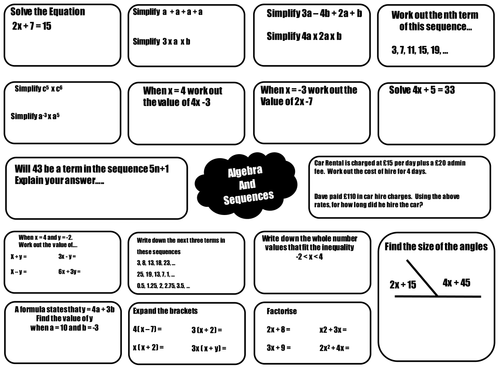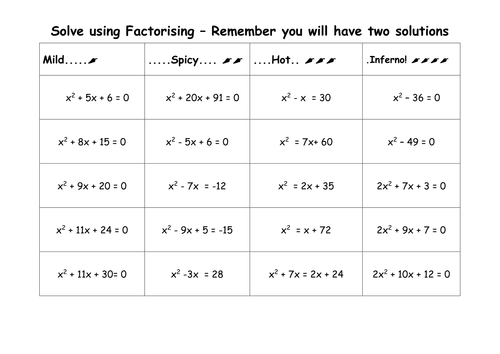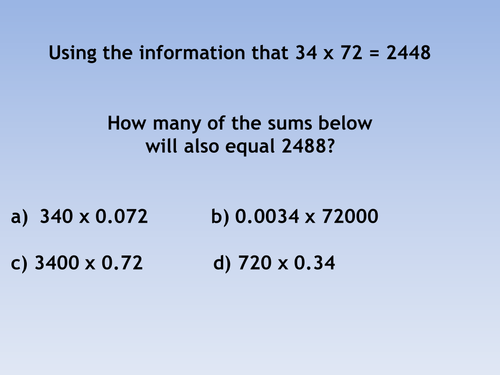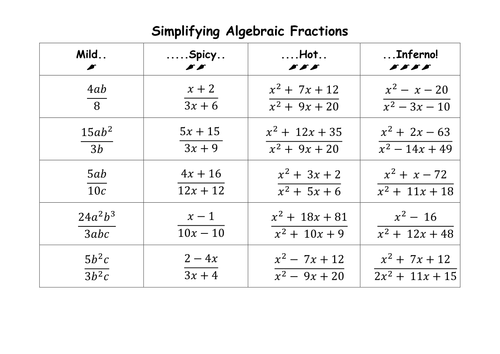
87Uploads
414k+Views
416k+Downloads
All resources

Surds - Revision Powerpoint
A powerpoint (with an initial starter involving indices) that covers why we use surds, simplifying surds, multiplying and rationalising. I have been using this with Year 11 intervention groups. There are also some example exam style questions and problem solving tasks. You may need some additional work to turn this into even a two or three lesson block.

Straight Line Graphs
A nice open ended worksheet for L6/7 students to recap Graphs at the end of a topic.
Students can start at any point on the wheel according to their confidence levels
Starts at plotting from a table of values, through calculating Gradients, then Gradient intercept richt upto finding an equation given tow co-ordinates.

Adding and Subtracting Fractions - Lesson
KS3 / GCSE Lesson Plan. A clear powerpoint to explain how to add/subtract fractions. Ideal for first lesson on topic.

Adding and Subtracting Negative Numbers
An easy way to try to explain to students why 'minus minus' actually means 'plus'. With thanks for the idea to Craig Barton.

Area and Volume of Similar Shapes
A complete lesson worksheet and starter activity for students to discover the link between length scale factor and the area/volume of similar shapes and/or solids. Could be split into Area for one lesson and then volume for the second.

Factors, Multiples, Primes into Venn Diagrams
A lesson to remind students how to classify types of number ideal for Ks3 or Ks4 Foundation GCSE.
See my Free "Bingo" resource for an ideal starter or plenary depending on the group.
The worksheets allows students to do a bit of fun shading, and likewise also introduces Venn Diagrams which have been added into the GCSE curriculum.

Terminating and Recurring Decimals - Recurring Decimals to Fractions
A big value bundle which would form the basis of a 2 or 3 lesson block on this topic.
First lesson - why do some decimals terminate and some decimals recur? - getting students to find for themselves through division and investigation that this relates to the prime factors of the denominator.
Second / Third lesson - plenty of work / practice including a well graded Mild / Hot / Spicy / Inferno sheet for this tricky topic.

GCSE Reverse / Compound Percentages Revision
A revision powerpoint for the two main ways in which percentage understanding tends to be assessed at GCSE - reverse percentages, and repeated percentage change. This could also be split into two lessons if time is not an issue. Two methods of finding reverse percentages are inlcluded, along with an activity to get students thinking about the decimal multiplier effect.

Missing Interior and Exterior angles in Polygons
A two lesson set of notebook files covering finding the exterior and interior angles of regular polygons

Rearranging Formulae Revision
A straightforward powerpoint to take students through the basics of rearranging formulae. The lesson starter involves solving equations to get students into the frame of mind to consider inverse operations. The powerpoint also includes some exam questions including more difficult examples where the subject appears twice. Some students might require some reminders on factorising and expanding within the lesson too.

Codebreaker Activity - Factors, Multiples, Squares, Primes
An exercise designed to recap or revise all areas of number work that involves HCF, LCM, Powers, Roots etc suitable for GCSE or KS3 students. I use this as an end of unit assessment and either make A3 sheets to share or individually as a homework. The answers will spell a question that then needs to be answered and can be modelled at the end of the lesson as a plenary. A simple extension task is to ask students to test each other and make their own codes - I have also set this for homework in the past.

Codebreaker - Algebraic Substitution
Suitable for a lesson activity or homework for a Foundation GCSE or KS3 teaching group. Students find the values, convert to letters and an easy progress check can be made by asking the students what it spells!

Ratio and Proportion - 5/6 lesson bundle
A Bundle of Notebook and Powerpoint Presentations introducing ratio, simplifying, unitary form, dividing into a ratio and some basic proportion.

Revision Sheets - Algebra, Number, Fractions/Decimals
Three examples of a sheet that I enlarge to A3 to give students general purpose revision on these topics. Most suitable for a lower ability GCSE or any KS3 maths class. The templates can be changed for any topic once youve used them.

Solving Quadratics By Factorising
A straightforward lesson on this essential skill with a differentiated worksheet, with a few non-monic equations, and some equations that need to be rearranged into the correct form first.

Currency Exchange GCSE Questions Revision
A lesson focussed on answering these common questions, with some reverse rate questions thrown in to keep things interesting!

Standard Form Conversions and Calculations
Two nice notebook files for at least two lessons on Standard Form.

Simplifying Algebraic Fractions
A straightforward lesson and differentiated or staged worksheet for simplifying algebraic fractions. We start with simple multiplication / division and then through expressions which require factorising. Perfect for Middle ability Y11’s, a brighter group might want some further examples of non-monic quadratics as an extension activity.
October 2021. Updated to include a powerpoint version for non Notebook users.
Bundle

GCSE / KS3 - Big Value Algebra Bundle - Save 40%
All of my Algebra resources from simple expressions, equations and including ore complex formulae, all in one bundle so you can make a saving of over 25%!
Enjoy.

Evaluating Zero and Negative Powers
A clear and straightforward Notebook file to explain what these indices represent. Can be used in conjunction with GCSE textbook or suitable worksheet although there are plenty of examples on screen

